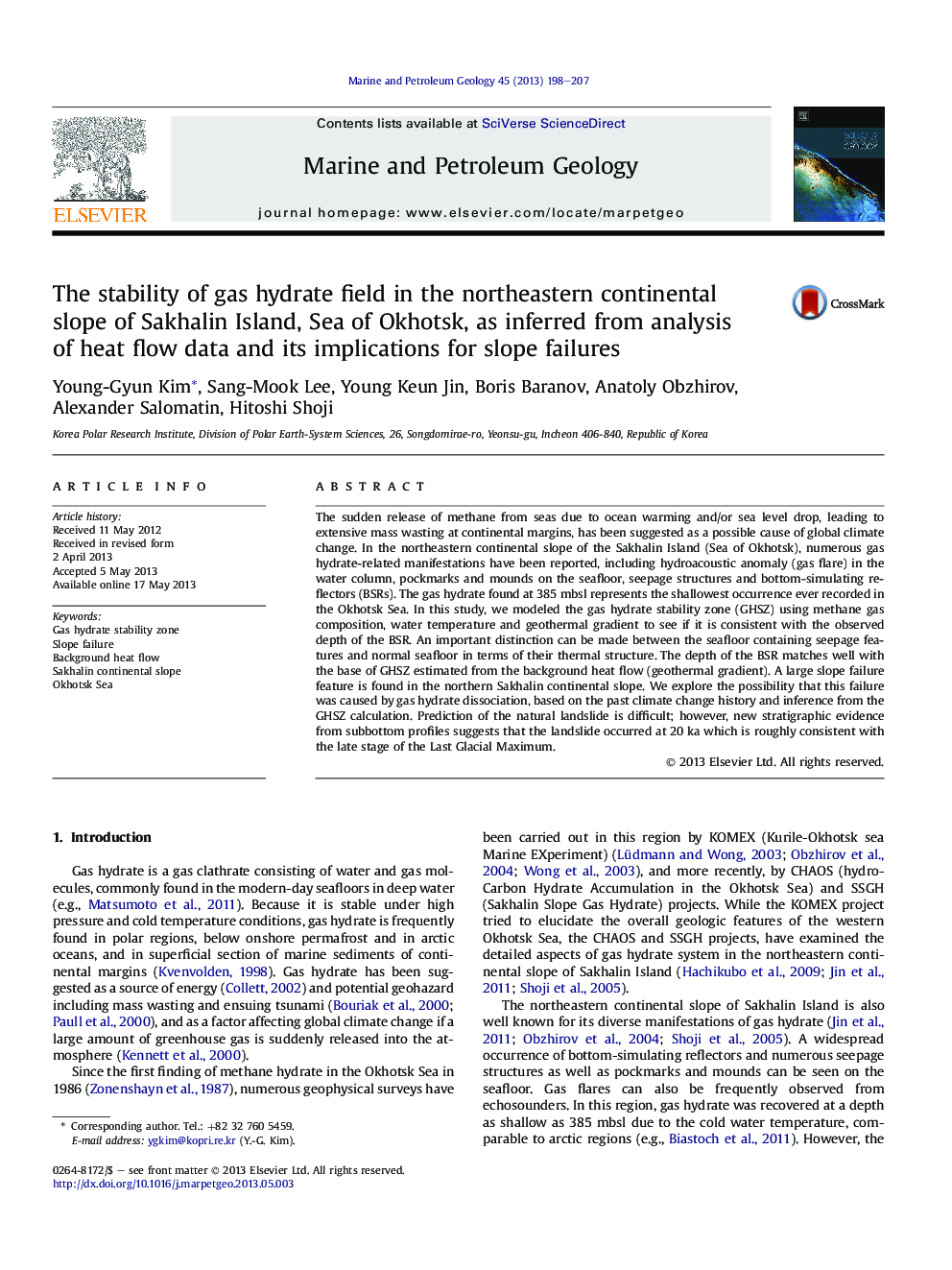| کد مقاله | کد نشریه | سال انتشار | مقاله انگلیسی | نسخه تمام متن |
|---|---|---|---|---|
| 6435491 | 1637179 | 2013 | 10 صفحه PDF | دانلود رایگان |
- We model the evolution of gas hydrate stability zone (GHSZ) at NE Sakhalin slope.
- Heat flow measured from non-seepage area is representative of the region.
- Bottom-simulating reflectors and gas flare from core agree with the estimated GHSZ.
- Past slope failure seems to occur during the Last Glacial Maximum.
The sudden release of methane from seas due to ocean warming and/or sea level drop, leading to extensive mass wasting at continental margins, has been suggested as a possible cause of global climate change. In the northeastern continental slope of the Sakhalin Island (Sea of Okhotsk), numerous gas hydrate-related manifestations have been reported, including hydroacoustic anomaly (gas flare) in the water column, pockmarks and mounds on the seafloor, seepage structures and bottom-simulating reflectors (BSRs). The gas hydrate found at 385Â mbsl represents the shallowest occurrence ever recorded in the Okhotsk Sea. In this study, we modeled the gas hydrate stability zone (GHSZ) using methane gas composition, water temperature and geothermal gradient to see if it is consistent with the observed depth of the BSR. An important distinction can be made between the seafloor containing seepage features and normal seafloor in terms of their thermal structure. The depth of the BSR matches well with the base of GHSZ estimated from the background heat flow (geothermal gradient). A large slope failure feature is found in the northern Sakhalin continental slope. We explore the possibility that this failure was caused by gas hydrate dissociation, based on the past climate change history and inference from the GHSZ calculation. Prediction of the natural landslide is difficult; however, new stratigraphic evidence from subbottom profiles suggests that the landslide occurred at 20Â ka which is roughly consistent with the late stage of the Last Glacial Maximum.
Journal: Marine and Petroleum Geology - Volume 45, August 2013, Pages 198-207
